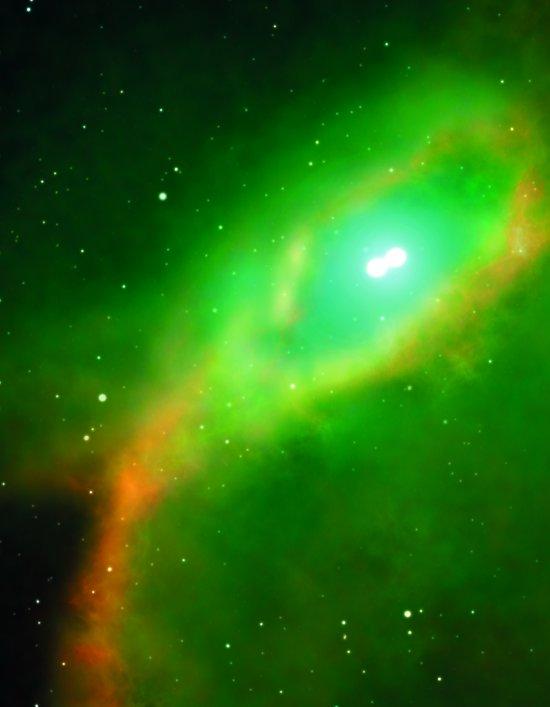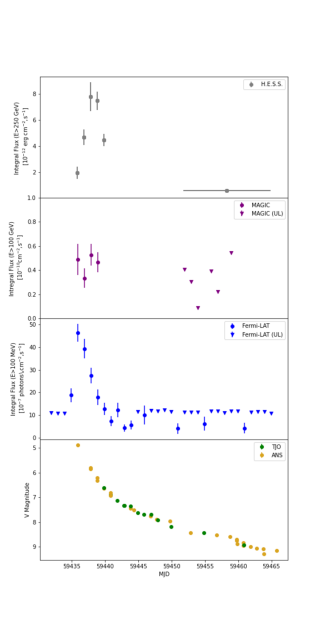The planetary nebula (PN) stage is the ultimate fate of stars with mass 1 to 8 solar masses (M⊙). The origin of their complex morphologies is poorly understood, although several mechanisms involving binary interaction have been proposed. In close binary systems, the orbital separation is short enough for the primary star to overfill its Roche lobe as it expands during the Asymptotic Giant Branch (AGB) phase. The excess material ends up forming a common-envelope (CE) surrounding both stars. Drag forces would then result in the envelope being ejected into a bipolar PN whose equator is coincident with the orbital plane of the system. Systems in which both stars have ejected their envelopes and evolve towards the white dwarf (WD) stage are called double-degenerates. Here we report that Henize 2–428 has a double-degenerate core with a combined mass unambiguously above the Chandrasekhar limit of 1.4 M⊙. According to its short orbital period (4.2 hours) and total mass (1.76 M⊙), the system should merge in 700 million years, triggering a Type Ia supernova (SN Ia) event. This finding supports the double-degenerate, super-Chandrasekhar evolutionary channel for the formation of SNe Ia.
Caption: Artist illustration of the central core of the planetary nebula Henize 2-428. Stars are not to scale. Credit: Gabriel Pérez, SMM (IAC).
Advertised on
References



